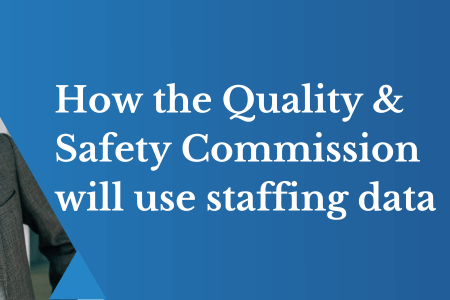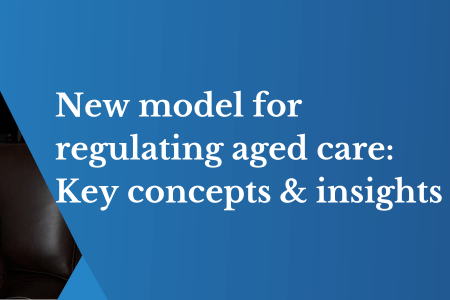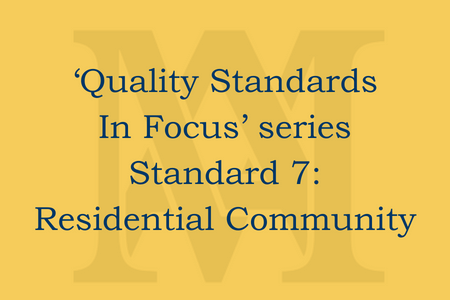The new Aged Care Quality Standards – Standard 3: The care and services
November 29, 2022 | Quality

By Katie Airey, Quality, Risk and Compliance Lead
As part of the Aged Care reform, the Department of Health and Aged Care (DoHAC) are undertaking a review of the Quality Standards. On the 26th October 2022 the DoHAC held a focus group to seek feedback on the draft Quality Standards –to seek feedback on the draft Quality Standards – Standard 3: The Care and Services from consumers, aged care providers and workers.
The draft Quality Standards are designed to give providers more clarity on how they can achieve outcomes, while giving providers balance and flexibility to innovate in order to demonstrate compliance.
Standard 3: The care and services
The draft Standard 3 draws on elements of Standard 2 – Ongoing assessment and planning with consumers, Standard 3 – Personal and clinical care and Standard 4 – Services and supports for daily living of the current Quality Standards
The intention of Standard 3 – The care and services, is to describe how providers must deliver care and services to older people. This includes ensuring older people are engaged in communication to determine their needs, that care and services are provided in accordance with the older person’s preferences to enable them to live their best lives. Standard 3 is underpinned by Standard 1 and draws on the actions to ensure providers deliver tailored care that is individualised and aligns with what is important to the older person.
The Standard retains many of the current concepts including;
- Assessment and care planning – which includes more detailed requirements regarding the matters to be captured in care plans and how care plans inform care delivery
And aims to strengthen the focus on the below areas;
Delivering care & services in a way that supports independence and quality of life – The provider must ensure that care and services are delivered in way which is in accordance with evidence-based best practice, meets the needs, goals and preferences of each older person. Care and services must be culturally safe, trauma aware and enables a quality of life and wellbeing that is meaningful to each individual.
Supporting people living with dementia – The organisation has systems and strategies in place to effectively communicate with older people who are living with dementia. Providers must demonstrate an understanding of the different ways in which older people communicate both verbally and non-verbally.
Communicating regarding an older persons care & services – Providers must communicate effectively with older people in their care, between workers and others who are involved in delivering care and services to older people. This includes where there are changes, risks, or deterioration of an older person. It includes systems and processes which enable communication and escalation of changes as appropriate.
Coordination of care – Providers, in partnership with each older person are required to facilitate planned and coordinated care and services, including where multiple health and aged care providers support the older person to achieve the care and services they choose. Planned care and services must be effectively documented and communicated to ensure continuity of care.
The draft Quality Standards will align to the new regulatory framework and legislation, in order to have a greater focus and understanding of person-centred care and rights-based care. This will support providers to approach planning care and services that are determined though truly understanding each older person, what is important to them and promoting autonomy and choice.
Standard 3 – Overview
Expectation statement for older people
The care and services I receive:
- are safe and effective
- optimise my well-being and quality of life
- meet my current needs, goals and preferences
- are well planned and coordinated.
Outcomes Statements:
3.1: Assessment and planning
Older people are actively engaged in developing and reviewing their care and services plans. Care and services plans describe the current needs, goals and preferences of older people, are regularly reviewed and are used by workers to guide the delivery of care and services.
3.2: Delivery of care and services
Older people get safe and quality care and services that meet their needs, goals and preferences. Care and services are provided in a way that is culturally safe, appropriate for people with specific needs and diverse backgrounds and supports reablement.
3.3: Communicating for safety and quality
Critical information relevant to the older person’s care and services is communicated effectively with older people, between workers and with others involved in the older person’s care. Risks, changes and deterioration in an older person’s condition are escalated and communicated as appropriate.
3.4: Coordination of care and services
Older people receive planned and coordinated care and services, including where multiple health and aged care providers, carers and others are involved in the delivery of care and services.
For more details on the draft Quality Standards click here
The Aged Care commission will conduct a pilot to test the redesigned audit methodology for assessing providers against the revised Quality Standards, this is expected to occur early in 2023.
Further information will be made available on the Aged Care Commissions website.


